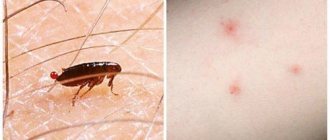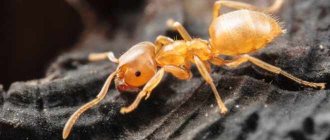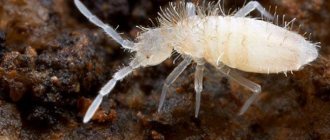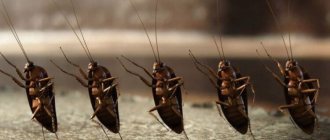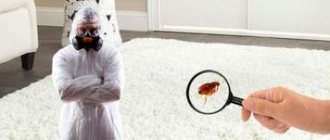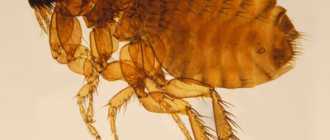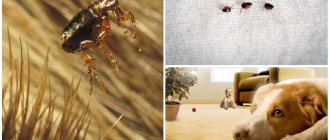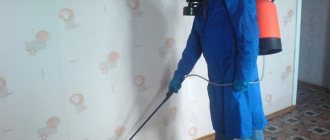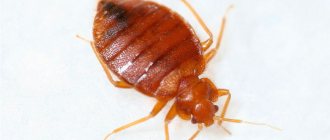Blood-sucking insects have accompanied people since the beginning of time. And even in the modern world, full of innovative technologies in various industries, getting rid of annoying parasites is an impossible task.
Fleas are a common type of insect that causes a lot of trouble for people and pets.
How dangerous are fleas to humans?
Even though fleas do not live on humans, they pose a serious health hazard. Insects feel comfortable parasitizing animals whose thick fur provides them with reliable shelter. But when the population of parasites becomes very large and the food obtained from animals is no longer enough or the fleas simply find themselves in close proximity to a person, they bite him.
Flea saliva contains many chemical compounds that are allergens. Therefore, the bite accordingly provokes an allergic reaction: irritation and swelling of the skin, itching, and in severe cases, fever, difficulty breathing, swelling of the larynx.
Bites
Parasites are carriers of pathogens, some of which are deadly. After a flea bite, a person can get sick:
- plague;
- typhus;
- encephalitis;
- hepatitis;
- salmonellosis;
- anthrax;
- tularemia.
Many individuals carry worm eggs. If you accidentally swallow an insect, you can become infected with helminthiasis.
Bites and damage caused
The flea's mouthparts are ideally suited for piercing the skin of a warm-blooded animal. A flea bite is quite painful because it is not accompanied by the injection of an anesthetic into the punctured area. Instead, the flea secretes enzymes that prevent the blood from clotting. Meanwhile, the pain of the bite is considered the least of the problems caused by the blood-sucking parasite. In fact, flea bites can lead to the following consequences:
- allergic reaction;
- infection with serious diseases;
- wound infection when scratching.
The greatest danger to humans are dangerous diseases carried by fleas. The specificity of the disease is determined by the specific type of blood-sucking parasite. Some species spread helminthic diseases, infection of which can also have serious consequences for humans.
Fact! The mouthparts of these insects lack a blood-sucking proboscis like those of bedbugs and mosquitoes. In order to get to the blood vessel, they have to literally drill into the layer of skin.
Causes of fleas in the house
Since fleas need fresh blood to reproduce, their habitat is directly related to animals and birds. Parasites can live both in the fur or feathers of the host, and in the vicinity of it, for example, in a burrow, nest or litter (if we are talking about a domestic animal).
Since the optimal conditions for the development and residence of parasites are warmth and humidity, they actively colonize human homes. The most common answer to the question of where fleas come from at home is that pets brought them. But there are many other ways insects can enter a house or apartment.
Where do fleas come from in the city?
There are no fewer fleas in cities than in rural areas. After all, they do not need special conditions to live, the main thing is that there is food and shelter. Insects can live in lawn grass, in a bird's nest, in vacant lots and parks, in basements and attics. Parasites do not have to starve, since there are many stray animals on the streets.
With the onset of autumn, insects either fall into suspended animation, in which they can survive until the onset of warm weather, or try to settle in a warmer place. This explains where fleas come from in residential buildings, warehouses, and stores.
Where in a private house or country house?
The main reason for the appearance of fleas in a country house is animals. These can be domestic dogs and cats or farm animals and birds that are bred by the owners (for example, rabbits, sheep, chickens, ducks, turkeys). Insects can get into the house with a pet, or they can be brought on clothes or shoes by a person who has been in contact with infected animals.
Small black parasites often appear in a country house - these are rat fleas that live in the fur of rats and mice living in the underground or basement. Earth fleas, their eggs and larvae enter the house on the soles of shoes or on the paws of animals.
Where in the apartment?
There are many reasons for the appearance of fleas in an apartment. Most often, parasites enter an apartment in the following ways:
- the pet brought parasites after a walk;
- a person himself brought insects into the apartment after petting a stray dog or kitten on the street;
- parasites enter the apartment on the clothes or shoes of household members;
- fleas enter apartments located on the ground floor from the basement, and apartments on the upper floors from the attic;
- insects can move from apartment to apartment throughout the house through the ventilation system, so you shouldn’t be surprised that fleas appeared on the 5th or 10th floor.
It should be taken into account that fleas are more often found in apartments that are heavily cluttered and kept in unsanitary conditions.
Why are there fleas in the apartment if there are no animals?
As already mentioned, fleas need to drink blood to develop and reproduce. Therefore, the risk of their occurrence is significantly increased by animals living in the apartment. But even if there are no pets, fleas still appear in the apartment. For example, a neighbor's dog may leave several fleas or larvae on the doormat, which then migrate into the apartment on the shoes of someone in the household.
Fleas in the apartment
If one of the neighbors poisoned the parasites, then the survivors may enter the apartment in search of a safe place to live. Bloodsuckers can enter an apartment with purchased furniture or clothing if the items were previously stored in a warehouse infested with insects. Parasites will provide themselves with fresh blood by attacking apartment residents.
Rat
There are European and southern representatives of this species. The former live on the fur of domestic rodents. They parasitize rats and mice in European countries. They are known carriers of rat tapeworm and carriers of plague.
Southern relatives are among the most dangerous in the world. By first biting a rat and then a human, the insect transmits murine typhus and bubonic plague .
Rat fleas
Signs of fleas at home
It is quite easy to determine that fleas have appeared in an apartment or house. You can remain in the dark at first, while there are still few insects and they are not very active, but every day the signs that parasites are neighboring you become more and more obvious:
- the behavior of pets changes - they become restless, irritable, often itch, and sores appear on the skin;
- household members have bite marks on their bodies (most often on their legs below the knee), which itch and do not go away for several days;
- Small dark dots were noticed on the floor, furniture, linen or soft toys.
If at least one of the signs is noticed that confirms that fleas live in the apartment, it is necessary to urgently take measures to destroy them.
How to find a flea nest at home?
Finding where fleas are hiding can be quite difficult. Firstly, because if there are parasites in the house, they very quickly disperse throughout all the rooms. Secondly, the parasites are very small, jump well and prefer secluded places, so it is quite difficult to notice them.
Of course, the first thing you need to do is examine your pet; perhaps fleas are hiding in its thick fur. But if parasites are found on a dog or cat, you should not calm down. This is definitely not the only place where fleas have settled, so we need to continue the search.
The most likely places where you can find insects in an apartment:
- carpets, bedding;
- cracks and crevices in the floor, walls;
- soft toys, upholstered furniture;
- behind the baseboards;
- behind peeling wallpaper or peeling wall panels.
When starting your search, you need to take into account that fleas can live in absolutely all areas of the apartment, be it the bathroom or the bedroom.
What types of fleas are known?
About two thousand varieties of fleas are known. 30 of them can occupy human habitations. The names of the species depend on the habitats of the parasites:
- earthen fleas or otherwise cruciferous (they settle in vegetable gardens, dusty, damp basements, dirty rooms);
- pets (including dogs, cats, humans, rats);
- bedding (takes up mattresses, pillows, bed linen);
- sandy (live on the sand, under furniture, carpeting).
- adult body size 5 mm;
- the sides of the body are flattened;
- color yellow-brown;
- jump high;
- The body of the parasites has bristles, with the help of which the fleas cling to the fur of animals and human clothing.
Cruciferous fleas
In order not to confuse fleas with other insects, you should study their appearance:
If parasites have appeared, you need to find out the reasons for their appearance in the living space and take the necessary measures to block access to new pests.
Disinfect your apartment from fleas
How long do fleas live?
The average lifespan of a flea is 2-3 months. This indicator is relevant for ideal conditions, when the temperature and humidity of the environment are most suitable for a particular type of insect. If, for example, the air temperature rises significantly, the flea dies within 3-4 weeks. But cold, on the contrary, increases the lifespan of the parasite; a flea can live 1.5 - 2 years.
Flea
Fleas living on animals have a harder time surviving. Most parasites die when a cat or dog practices hygiene.
Attention! Oddly enough, the lack of food also increases the life expectancy of parasites. Without food, fleas will not reproduce, but they can survive for months.
How to fight?
To remove fleas from your home, you need to start acting as soon as the insects are discovered. Only comprehensive measures will help, otherwise the parasites will remain and very soon they will make themselves felt again. To combat fleas, you can use modern pharmaceutical products and traditional methods.
To successfully get rid of parasites you must:
- carry out general cleaning (vacuum carpets, upholstered furniture, treat street clothes with a steam generator or have them cleaned, wash floors, get rid of dust, wash textiles and soft toys);
- treat pets with special anti-flea preparations, and subsequently, for preventive purposes, wear a flea collar or use other repellents;
- if there are a lot of insects, it is worth treating the room with an insecticide (it is advisable to choose a drug that affects not only adult insects, but also eggs and larvae, otherwise the procedure will need to be repeated).
To prevent fleas from returning, you should remember the following prevention measures:
- keep the home clean;
- avoid contact with street animals;
- wash your shoes after walking;
- regularly check your pets for parasites;
- use natural repellents in the apartment - herbs or essential oils.
By following these simple rules, the likelihood that fleas will return is significantly reduced.
Differences
Fleas are not as simple as they seem at first glance. Externally, representatives of different species are practically indistinguishable. The human eye sees only a small dark dot, which disappears from view as soon as someone tries to catch it. It is impossible to trace her movement . The tiny bloodsucker jumps high.
More than 2 thousand species of fleas are known. The most common among them are :
- human;
- clothing or bedding;
- felines;
- canine;
- rat;
- chicken
Almost every genus of mammals has its own parasite. Clothes, house or bed fleas more often live in the folds of clothing, fill space in the bed or hide in carpets and paths.
Fleas are white only at the larval stage. Then they have a worm-like shape. Flea larvae are not yet capable of biting and drinking blood . Therefore, while they grow up, they live closer to organic remains.
In addition to the varieties of fleas listed above, there are earth and grass fleas. From our materials you will learn what kind of insects these are and how to fight them, as well as how to detect and get rid of parasites in a parrot and hamster.
